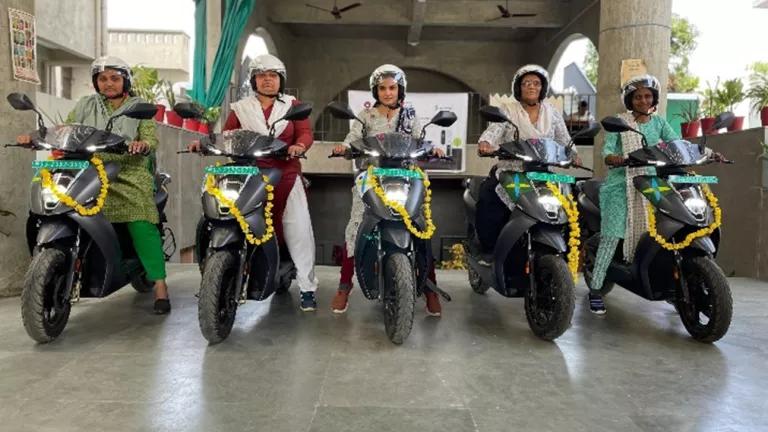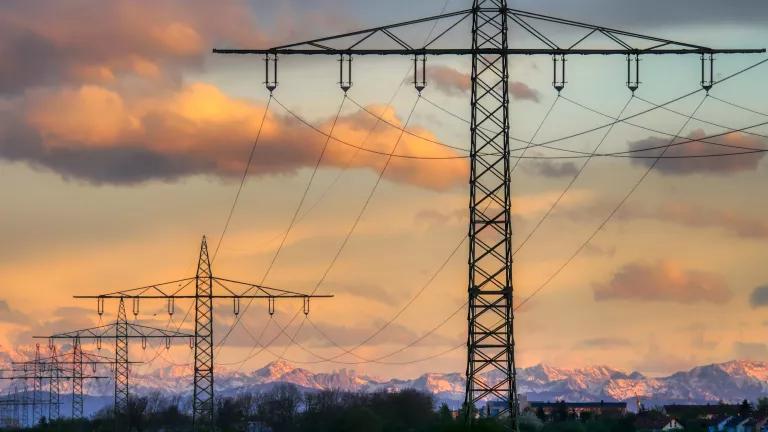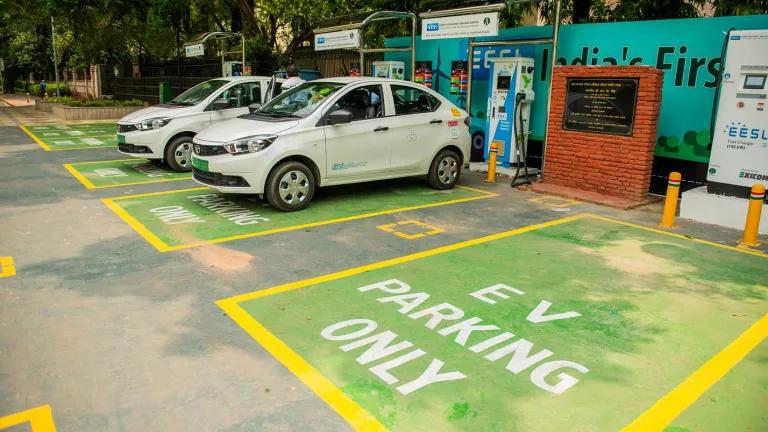COVID-19 Rebuild: Scaling Electric Mobility in India
Electric mobility is critical to rebuilding a stronger post-COVID-19 economy in India.
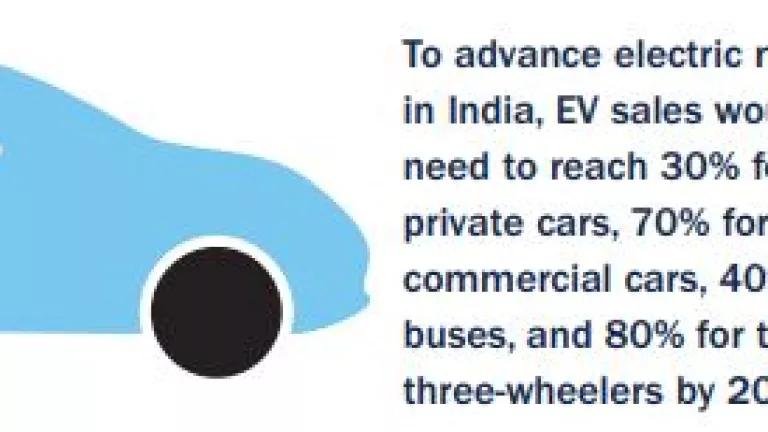
A diverse group of business, civil society, and academic leaders came together to introduce coalition letters that support advancing electric mobility in India. The coalition letters encourage the state governments of Gujarat and Telangana to release, adopt and implement their draft electric mobility policies, as discussed during a virtual roundtable, “Charging Ahead on Electric Mobility”. The coalition letters emphasized that electric mobility is critical to rebuilding a stronger post-COVID-19 economy in India.
The coalition letters highlighted that investing in the larger automotive and electric vehicle (EV) market, specifically through strong economic and policy drivers to rapidly scale-up charging infrastructure, is vital to India’s COVID-19 economic recovery, as well as, to achieve India’s national goals on electric mobility, air quality and climate change. NITI Aayog and Telangana government officials presented perspectives on electric mobility during the discussion. New research by NRDC and partners on the economic and policy drivers for advancing EV as well as best practices on EV charging infrastructure from China and the United States were also featured.
Coalition Letters to Support EV Policies in Gujarat and Telangana
Both the Gujarat Electric Vehicle Policy Letter and Telangana Electric Vehicle Policy Letter included a strong set of signatories. Mahindra Electric and Tata Motors, two of India’s leading auto companies, signed onto the letters. Energy Efficiency Services Limited (EESL), a leader in charging infrastructure siting, also supports the letters. A group of EV industry leaders and startups, including Bounce, Lithium Urban Technologies, Gayam Motor Works, Matter Motor Works, MCS Carger, and Sun Mobility, joined the letters. Industry groups, such as Confederation of Indian Industries (CII)-India Green Building Council (IGBC) and India Energy Storage Alliance (IESA) supported the letter. Leading civil society organizations, clean energy groups, and health experts, including the Administrative Staff College of India (ASCI), All India Disaster Mitigation Institute (AIDMI), The Climate Group, Climate Trends, Council on Energy, Environment and Water (CEEW) and NRDC signed onto the letters. The states of Gujarat and Telangana were the main focus of the letters given their prominent leadership roles and higher motorization rates in India.
The COVID-19 pandemic has brought to the forefront the importance of the India’s economic recovery to focus on jobs, health, and clean energy. As the letters explain, “[t]he transition to electric vehicles offers opportunities across both mobility as well as manufacturing. With regards to mobility, it will enable a more efficient, affordable, and clean transport ecosystem for the local population.” Prioritizing electric mobility, the letters continue, “will not only attract investments in the state to secure the supply chain through domestic manufacturing, but will also reduce the dependence on vehicle and component imports and develop the ecosystem for in-house manufacturing, aligning with the ‘Make in India’ campaign”, as recently discussed by Mr. Amitabh Kant, NITI Aayog CEO.

Advancing Electric Mobility in India
With growing income levels and a population of 1.3 billion, India’s automotive industry is expected to take off in a similar trajectory as China and the United States, but with the majority of the Indian market comprised of electric 2-wheelers, 3-wheelers, ride-hailing services (such as Ola and Uber) and EV buses. While the COVID-19 economic downturn will likely slow the short-term EV market growth, an estimated 4 million electric two-wheelers and three-wheelers are projected to be sold in India by 2025. Motor vehicles are estimated to contribute 20 to 40% of the air pollution in major cities, such as Ahmedabad and Delhi, contributing significantly to India’s air pollution crisis.
Under the Faster Adoption and Manufacturing of Hybrid and EV (FAME-II) scheme, India is set to deploy nearly 2,600 EV charging stations across the country starting in 2020. This is good start, but rapid scale-up charging infrastructure is needed to accelerate electric mobility in India. According to the Indian government, EV sales need to reach 30% for private cars, 70% for commercial cars, 40% for buses, and 80% for 2- and 3-wheelers by 2030 to advance electric mobility.
Roundtable Highlights
The roundtable discussion, “Charging Ahead on Electric Mobility” hosted by ASCI, GERMI, Climate Trends, and NRDC, focused on the effects of the COVID-19 economic slowdown in state, national and international markets. Evidenced-based takeaways on charging infrastructure from the largest EV markets—China and the United States—were also highlighted. Experiences in EV charging infrastructure from Gujarat and Telangana were featured. Preliminary analysis on recommendations to strengthen state-level policies on charging infrastructure in India were also discussed. In addition, letters of support for state EV policies in Gujarat and Telangana by a broad coalition of business, civil society and academics were explained.

NITI Aayog Mission Director Mr. Anil Srivastava provided special remarks on the overview of the national government’s perspectives on EVs and charging infrastructure in India. Hyderabad Unified Metropolitan Transportation Authority Managing Director Ms. K. Vijaya Lakshmi discussed views from the city-level on EVs, charging infrastructure and the COVID-19 slowdown.
Mr. Anil Srivastava provided context, "Commitment from the government is from the top—to move India to electric mobility. The lock-down during COVID-19 pandemic has shown what it looks like with less pollution when there are fewer vehicles on the road. The pandemic made people more aware of the need to mitigate air pollution for positive health impacts. This creates greater momentum to advance electric mobility."
Ms. K. Vijaya Lakshmi highlighted, “Electric mobility is an integral part of the sustainable transportation system. Deploying an adequate charging infrastructure can address one of the biggest stumbling blocks for the success of electric mobility in India. Prudent planning and implementation of charging infrastructure, along with policy initiatives and attractive incentives, will accelerate the eco-system for faster adoption of e-vehicles.”
Mr. Akhilesh Magal pointed out that “states need to start planning for the proliferation of electric vehicle chargers in both public spaces as well as privately owned overnight chargers. A strong subsidy scheme, such as what several states have done with rooftop solar PV, can go a long way to incentivise chargers. In parallel, good planning approaches need to be followed to be able to site chargers where they will be used. This will ensure the utilization of subsidies.”
Professor Rajkiran Bilolikar emphasized that the future belongs to electric vehicles. It is time to regroup and find ways to create stronger foundations proper for its emergence. Now it is critical to ‘charge’ ourselves with the essential infrastructure facilities. It is only through e-mobility that we can reach the destination of sustainability.”
International experts Mr. Simon Mui and Ms. Mona Yew provided examples as to how both China and the United States have worked to scale their respective EV markets. Their remarks provided context as to how India can draw on the challenges and advancements in these markets in an effort to scale charging infrastructure in India.
Ms. Mona Yew pointed out that “China has been able to scale its EV market through a series of supportive national policy measures and large investments; it has more than three million passenger EVs on the road, which accounts for more than half of the EVs worldwide. China is now moving towards more market-driven approaches where customers would choose EVs not only because EVs are highly subsidized, but because EVs are an economically attractive and environmentally friendly option.”
Mr. Simon Mui highlighted the role charging infrastructure investment could have in a green recovery effort, “we can grow jobs, have clean air, and ensure increased access by making investments today to build a robust, electric vehicle charging infrastructure network for apartment complexes, businesses, and public spaces.”
A new issue brief, Economic and Policy Drivers for Electric Vehicle Charging Infrastructure in India – Preliminary Analysis, focused on state-level charging infrastructure polices to inform bottom-up transformation for broader EV adoption in India was released during the virtual roundtable. NRDC and partners conducted a model-based analysis on public charging stations in two states, Gujarat and Telangana. Ms. Charu Lata and Mr. Polash Mukerjee discussed the findings from the economic and policy assessment and discussed key policy recommendations focused on creating government programs and investment strategies. The report, Scaling-Up Electric Vehicle Charging Infrastructure: Lessons from China and the United States for the Indian Context was also released and draws on parallels between China and the United States to expand charging infrastructure in the Indian context. The extensive report presents key takeaways for addressing charging needs, regulatory constraints, market barriers, and broader investment gaps.
Ms. Anjali Jaiswal from NRDC summed up the discuss on charging infrastructure and the opportunity at hand, “the COVID-19 economic downturn and related stimulus needed to rebuild in India present an opportunity to support the automotive industry through investment in electric mobility, especially electric vehicle charging infrastructure. Investing in electric mobility, as part of the economic recovery, will help achieve India’s goals to create jobs, reduce air pollution, and combat climate change.”
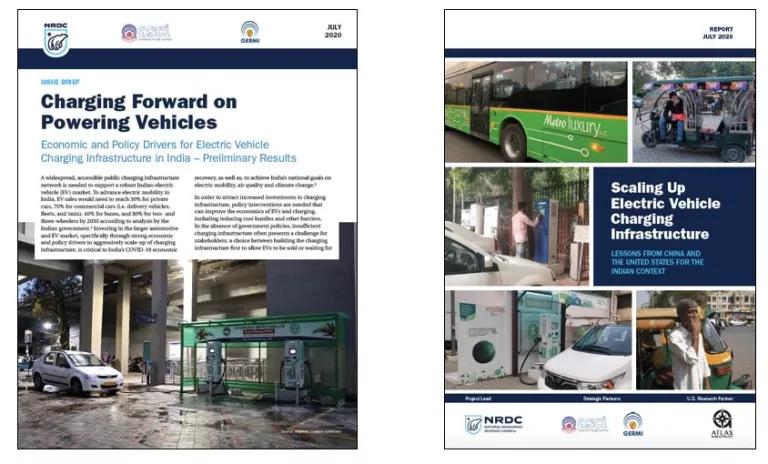
The publications can be found here:
- Economic and Policy Drivers for Electric Vehicle Charging Infrastructure in India – Preliminary Analysis
- Scaling-Up Electric Vehicle Charging Infrastructure: Lessons from China and the United States for the Indian Context
The coalition letters support state EV policies are here:

